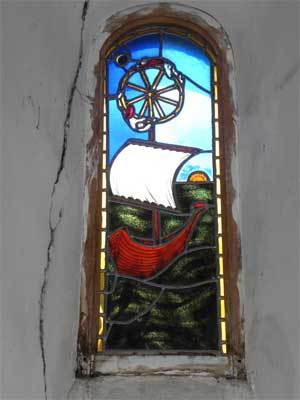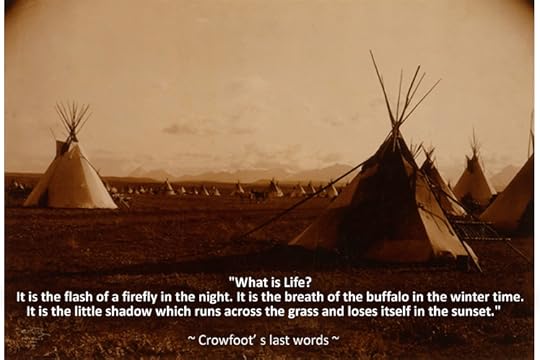Lawrence R. Spencer's Blog, page 32
July 1, 2024
INCARNATION
June 29, 2024
AUTUMN
Republished by Blog Post Promoter
Autumn, interchangeably known as fall in North America, is one of the four temperate seasons. Autumn marks the transition from summer into winter, in September (Northern Hemisphere) or March (Southern Hemisphere), when the arrival of night becomes noticeably earlier and the temperature cools considerably. One of its main features is the shedding of leaves from deciduous trees.
Some cultures regard the autumnal equinox as “mid-autumn”, while others with a longer temperature lag treat it as the start of autumn Meteorologists (and most of the temperate countries in the southern hemisphere) use a definition based on months, with autumn being September, October and November in the northern hemisphere, and March, April and May in the southern hemisphere.
In North America, autumn is usually considered to start with the September equinox and end with the winter solstice (21 or 22 December). In traditional East Asian solar term, autumn starts on or around 8 August and ends on or about 7 November. In Ireland, the autumn months according to the national meteorological service, Met Éireann, are September, October and November. However, according to the Irish Calendar, which is based on ancient Gaelic traditions, autumn lasts throughout the months of August, September and October, or possibly a few days later, depending on tradition. In Australia and New Zealand, autumn officially begins on 1 March and ends on 31 May. — Wikipedia.org
June 28, 2024
6,000 YEAR OLD COUPLE
Republished by Blog Post Promoter
Old couples know it doesn’t matter what anyone thinks of our bodies.
We’re pleased to know that sex has nothing to do with happiness.
It’s good to know there’s is at least one person who needs our help.
We discovered that no sex is good sex. Being together is fine.
Love is the joy of listening to each other talk about nothing.
We know what we mean before we say it, but we listen anyway.
Our aches and pains are more interesting than the evening news.
There’s comfort in the sound of snoring. We’re both still here.
I know I’ll miss you and you’ll miss me when we’re gone.
Most of all, we know we’re always together no matter where we are.
________________________________
By Lawrence R. Spencer. 2011.
June 27, 2024
HISTORICAL HAIR STYLES
Republished by Blog Post Promoter
Here is a fascinating series of videos that describe and demonstrate the hair styles worn by men and women of the ancient world: (see the full series here)
June 26, 2024
DO WHAT YE WILL
Republished by Blog Post Promoter
“An Ye Harm None, Do What Ye Will”
Bide within the Law you must, in perfect Love and perfect Trust.
Live you must and let to live, fairly take and fairly give.
For tread the Circle thrice about to keep unwelcome spirits out.
To bind the spell well every time, let the spell be said in rhyme.
Light of eye and soft of touch, speak you little, listen much.
Honor the Old Ones in deed and name,
let love and light be our guides again.
Heed the flower, bush, and tree by the Lady blessed you’ll be.
Where the rippling waters go cast a stone, the truth you’ll know.
When you have and hold a need, harken not to others greed.
With a fool no season spend or be counted as his friend.
Merry Meet and Merry Part bright the cheeks and warm the heart.
Mind the Three-fold Laws you should three times bad and three times good.
When misfortune is enow wear the star upon your brow.
Be true in love this you must do unless your love is false to you.
“An Ye Harm None, Do What Ye Will”
________________
—- from “The Wiccan Rede” published in the neo-Pagan magazine Earth Religion News in 1974.
June 25, 2024
CROSSROADS OF FOUR WINDS
Republished by Blog Post Promoter
I don’t often pay much attention to UFO stuff, but a friend of mine sent me the following article about Mount Bugarach, which located in the Pyrenees Mountains in France that has been related to legends of Mu, Lemuria, Atlantis and UFOs for centuries.
The mountain, 1230m high, is known as “The Crossroads of the Four Winds” and also as the Mountain-with-its-feet-in-the-air, because it once blew up and the top part of it landed upside-down-down. There does seem to be more of it above than below. It dominates the south of Aude; you can see it from almost everywhere. It is an orientation point – they used it to orientate Monségur, the “last stand of the Cathars”, because compasses don’t work on the pog.
The mountain is a dormant volcano; ariel photos clearly show its crater. It is full of limestone caverns and the internal fires still raging deep down give rise to the hot springs that flow down towards Rennes-les-Bains from Sougraine in the form of the River Sals. The water is also slightly radio-active.
If you climb up the mountain after sunset, you will hear strange noises and see strange lights (some brave souls have done it) and the legends of strange lights and flying saucers are tumbling over each other for recognition. Your ears start buzzing – well, so would mine after that climb! Then you’ve got to get back down in the dark. Most of the reports of UFOs are sightings of clouds, and it is rare day when no cloud hovers over Bugarach and its crater.
Underneath the mountain, legend says, is a huge lake, on which space-ships can sail, until such time as they need to return to their native planets. This is strange, because other legends say that underneath Bugarach is the grand forgotten continent of Lemuria. You can still find web-sites about “The People of Mu”; a sacred race. Today Rennes-le-Château, however, is competing for this legend – the Temple of Lemuria, built over a sacred spring, stood on the plateau beneath the citadel of Rennes.
Bugarach is also apparently an outpost of Atlantis, the legendary utopian civilization where all was sweetness and light, that existed somewhere near Iceland about 12,000 years ago, and then disappeared but meanwhile gave its name to the Atlantic Ocean. There are some rocks between Bugarach and Mont Cardou, just to the north of Rennes-les-Bains, called The Gates of Atlantis.
Some of these legends are patently ridiculous, but people cling to them as though they are pets. The village of Bugarach, at the foot of the mountain, is very concerned. I have a press cutting from 2007, saying the maire was seriously worried. “Strange pilgrims” he said, “Have paid a ransom for houses that now have esoteric names. I’m afraid these are owned by sects or cults.” In short, mystic fever exists. “They have made the peak sacred, some of them are even searching for the grave of Jesus Christ.” The newspaper observed that it was true – the village of Bugarach and its mountain had caught Rennes-le-Château fever.
The latest report (late 2010) is that the harrassed maire he will call out the army if necessary, for strange people are already gathering so that the aliens can lift them off the mountain and save their lives when the world ends in 2012, according to the Mayan calendar. If I remember correctly, (I saw it on a film I have, called “What Time Is It?”) the Mayans said that TIME would end, not the world. But they were wrong – for the Mayans no longer exist, do they? Their time stopped a long time ago.
Let’s get back to real history. In the year 889 the village was called Villa Bugario, implying it belonged to a Roman called Bugarius. Many villages in Languedoc whose name ends in -ac were of Roman origin, and by 1194 the village was called Ste Marie de Bigarach and it was known as Bugarach by 1781. I think we can assume that the settlement of Bugarach started its life in Roman times, around 70BC, if not a little before. It would have been well-established when Mary and Jesus passed on their way to Rennes-les-Bains and they probably stayed overnight there.

The story that Bugarach was named after the children of Jupiter, Bug and Arach, is a children’s fairy tale. After the Crusade against the Cathars, who supposedly had a faith descended from that of the Bogomils (but it has been proved they didn’t) the legend arose the mountain was named after the Bulgares, Bogomils or even Buggers!!!
I have found no trace of the name Bugario or Bugarius in Roman history, but that doesn’t mean one didn’t exist, of course. After all, the Roman soldiers who colonised Gaul came from all over the Roman Empire; after serving their time, they were entitled to Roman citizenship and were often asked, during the last years of their service, to act as colonisers and take their soldiers, their soldiers’ families and their own families with them.
The Victorian writer from Carcassonne, Louis Fédie, says the village was originally a Celtic oppidum, which became Gallo-Roman. This implies it was a position that guarded the old road, which would have been Celtic before it was Roman – it was certainly a Celtic packhorse route before it reached Rennes-les-Bains. Fédie says the church was built in Visigothic times, that is sometime before 769AD. It was originally consecrated to St. Anthony the Hermit, a third century saint, as is the hermitage in the nearby Gorge of Galamus. Still today, every Ash Wednesday, there is a procession through Bugarach village, featuring a hermit who carries a cross. On the cross is a horse’s collar with bells on it – and also strings of pork sausages! This is because St. Anthony the Hermit is the patron saint of pork butchers. The pig, usually a jolly fellow featured in pictures of him, is supposed to represent the dreadful temptations Anthony suffered in the desert – the Devil was particular keen to tempt him into “fornication.” The saint resisted magnificently and didn’t die until he was 84.
The church at Bugarach has lots of “pagan” symbolism in it. There is only one depiction of Christ – he is on his cross and his eyes are open, implying that he didn’t die. One enters the church to see the altar at the far end – and on either side of the altar is a plaque of a grail cup.
In the church has a mysterious stained-glass window. It shows a boat with a sail, and on the mast of the boat is a wheel, bearing a marked resemblance to the Wheel of Fortune of the Tarot cards. The sun is setting to the right; and high in the sky on the left is a crescent moon.
This window is really in remembrance of Jules Verne, who often holidayed in the village. Bugarach inspired many of his novels, especially “A Journey to the Centre of the World.” On the mountain are many fissures in the rock that nobody has dared to go down yet! He also wrote a mystic book called Clovis Dardentor, published in 1896. The story is about a sailing boat – and the Captain was called Captain Bugarach and described as “he who is the master of the quartering wind.”
On a side entrance from the church is a skull and crossbones – surprisingly often found in Christain churches of the Ariège/Aude region in Languedoc. This invites us, as the Freemasons do, to meditate on our mortality.
In the church is a plaque to the Book of Seals – a secret book of the Cathars reputed to be solemnly opened only at Bema – Easter Sunday – according to the book “The Secret Message of Jules Verne,” by Michel Lamy, which is on sale at Rennes-le-Château. However, I’m not convinced of this. If the Cathars celebrated Easter it was not as we know it today, for they did not like the Crucifix, believing Jesus was immortal right from the beginning and so they did not celebrate the Resurrection. The book in Bugarach church is probably the Jewish Book of the Seven Seals – with a Paschal Lamb above it, yuk, a poor little corpse representing Jesus!
Bugarach has a ruined 13th century chateau, with only one tower of four still standing. In 1967 SESA member (Société d’Eudes Scientiques de l’Aude) Marie-Louise Durand, discovered in a lower room of this last tower a set of drawings from the 13th and 14th centuries. It sounds as though somebody was drafting something, for the design included lines and points, which connected to make four pentacles, and a swastika. A pentacle also exists inside the porch of the church, above the door of the shrine.
Lastly, there is another mysterious connection here – with Rennes-le-Château. Marie d’Ables de Nègre, from Niort, married her cousin François de Hautpoul Blanchefort, from Rennes-le-Château, in 1752 and the wedding took place in Rennes-le-Château, where the couple subsequently lived. This wedding united two parts of the Blanchefort families – and the village of Bugarach was included in the deal. Although the Bishop of Alet-les-Bains officiated, and four lawyers attended and signed the marriage certificate as witnesses, the second and third banns were not called and it all went through in less than a week.
— from an Article written by By Val Wineyard, posted here: http://ufodigest.com/article/bugarach-mystic-mountain
June 24, 2024
IMITATION LIFE
Republished by Blog Post Promoter
Art imitates life, and life imitates art. Cell phones are imitation life.

June 23, 2024
THE NATIVE PEOPLE
Republished by Blog Post Promoter
 “What is Life? It is the flash of a firefly in the night. It is the breath of the buffalo in the winter time. It is the little shadow which runs across the grass and loses itself in the Sunset.” ~ Crowfoot’s last words
“What is Life? It is the flash of a firefly in the night. It is the breath of the buffalo in the winter time. It is the little shadow which runs across the grass and loses itself in the Sunset.” ~ Crowfoot’s last words
SEE ALL EDWARD CURTIS PHOTOS OF INDIGENOUS PEOPLE OF CENTRAL & WESTERN NORTH AMERICA FROM 1900 A.D.
“Edward Curtis’s brief expedition to the Great Plains in the summer of 1900 was undoubtedly the most profound experience of his life. That summer, Curtis accompanied George Bird Grinnell, his friend and early mentor, on a trip to Montana and witnessed one of the last great enactments of the Sun Dance. As Curtis viewed the Sun Dance—a ceremony that few whites, or natives, would see again for nearly seven decades—his vision for the grand photo-ethnographic undertaking that would become his life’s work crystallized. The small body of images he made on that summer trip, among them The Three Chiefs, Piegan Dandy, and Piegan Encampment, clearly reveal that he had been touched by the magnificence of the Indian nations and the overwhelming depth of their culture. These photographs formed the beginning of the vast, elegant portrait of Native American cultures that Curtis would bring to the world over the next thirty years.
During Curtis’s time, the Indians of the Great Plains lived primarily in North and South Dakota, Montana, and Wyoming, a territory once traversed by great herds of migrating buffalo. Curtis was strongly attracted to the fiercely independent lifestyle of tribes such as the Lakota, Apsaroke, and Piegan and seemed particularly adept at transforming their dignity and pride into extraordinary photographic images.
Curtis’s photographs of Indian life on the Great Plains comprise perhaps his most popular body of work; for many people, his photographs of the chiefs and warriors, the beadwork, the horses, and the Plains landscape have come to exemplify the American Indian. However, his photographs of the Plains Indians also documented many other aspects of tribal cultural life, including hunting, warfare, vision quests, and religious ceremonies. These images remain an unparalleled vision of the strength and nobility of the Plains Indian peoples who had once held dominion over tens of thousands of square miles.”
SEE ALL EDWARD CURTIS PHOTOS OF INDIGENOUS PEOPLE OF CENTRAL & WESTERN NORTH AMERICA FROM 1900 A.D.
June 22, 2024
IMPOSTERS
Republished by Blog Post Promoter
“The first man who, having enclosed a piece of ground, bethought himself of saying “This is mine”, and found people simple enough to believe him, was the real founder of civil society.
From how many crimes, wars, and murders, from how many horrors and misfortunes might not any one have saved mankind, by pulling up the stakes, or filling up the ditch, and crying to his fellows?:
“Beware of listening to this imposter; you are undone if you once forget that the fruits of the Earth belong to us all, and the Earth itself to nobody”.
Jean-Jacques Rousseau (June 28, 1712 – July 2, 1778) was a Franco-Swiss philosopher of Enlightenment whose political ideas influenced the French Revolution.
MORE QUOTES from Rousseau:
“A country cannot subsist well without liberty, nor liberty without virtue. ”
“Virtue is a state of war, and to live in it means one always has some battle to wage against oneself.”
“Men, be kind to your fellow-men; this is your first duty, kind to every age and station, kind to all that is not foreign to humanity. What wisdom can you find that is greater than kindness?”
Read more about Rousseau — http://en.wikiquote.org/wiki/Jean-Jacques_Rousseau










